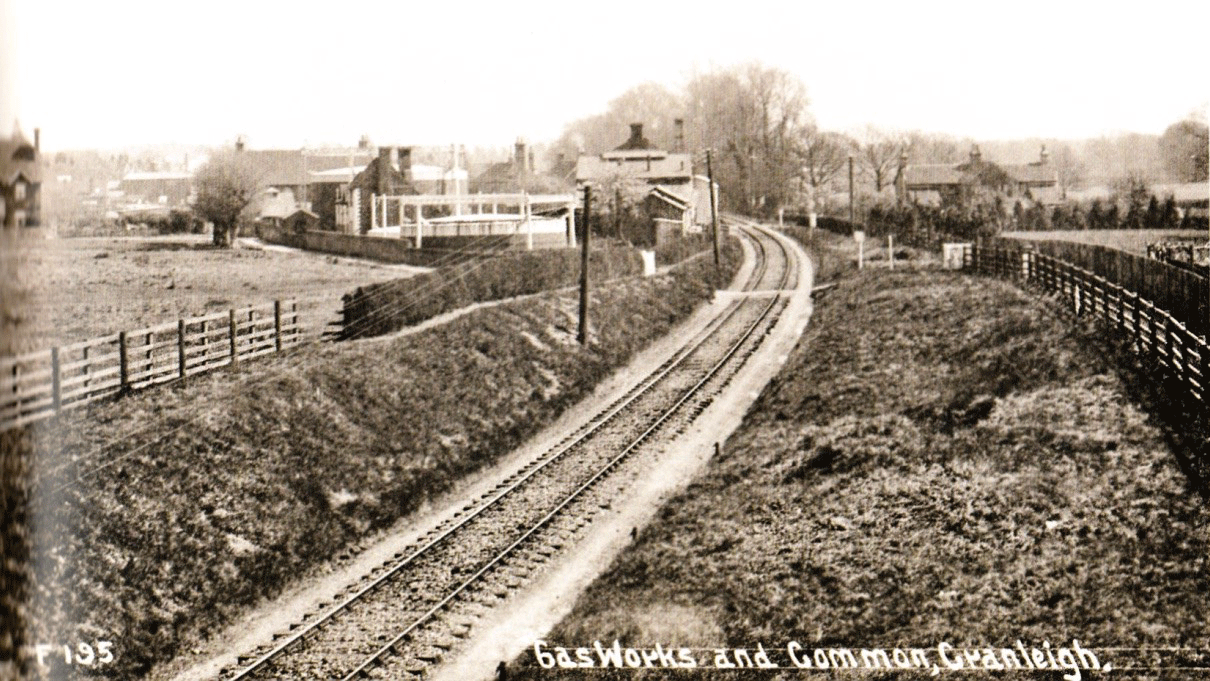
by Joy Horn Main Photo – The gasworks and gasholders, seen from the railway bridge (courtesy of Michael Miller
This walk is along a level stretch of the Downs Link Path (DLP) from the Elmbridge Road (B2130) railway bridge to Snoxhall recreation ground (about 20 minutes or 1 mile, no seats). From the Cranleigh Crossroads bus stop a path leads to the right of Park Gate Cottages to join the DLP 100 yards east of the bridge. We shall be envisaging what a traveller approaching Cranleigh station might have seen from the window of a steam train of the Horsham to Guildford Direct Railway, which travelled this route from 1865 to 1965.
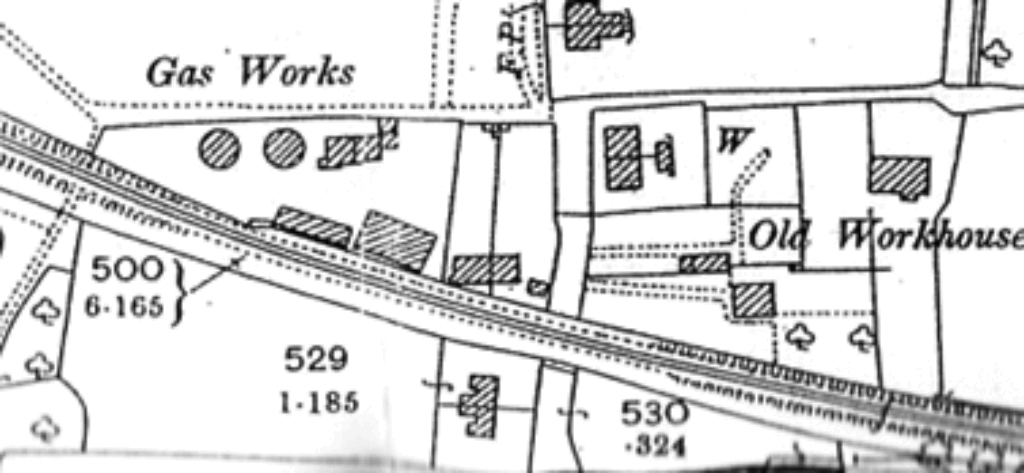
The bridge was built in 1864-5. There is now an alarming crack on the Guildford side. The first thing our traveller would have seen on the left side of the line was the gasworks, on the site of the housing blocks called Brackenwood. A V-1 rocket fell here on August 16th 1944, causing a gasholder to explode, and killing Mrs Annie Ede, the manager’s wife. Her name is on the War Memorial. The gasworks were demolished in the 1970s when Cranleigh went over to Natural Gas.
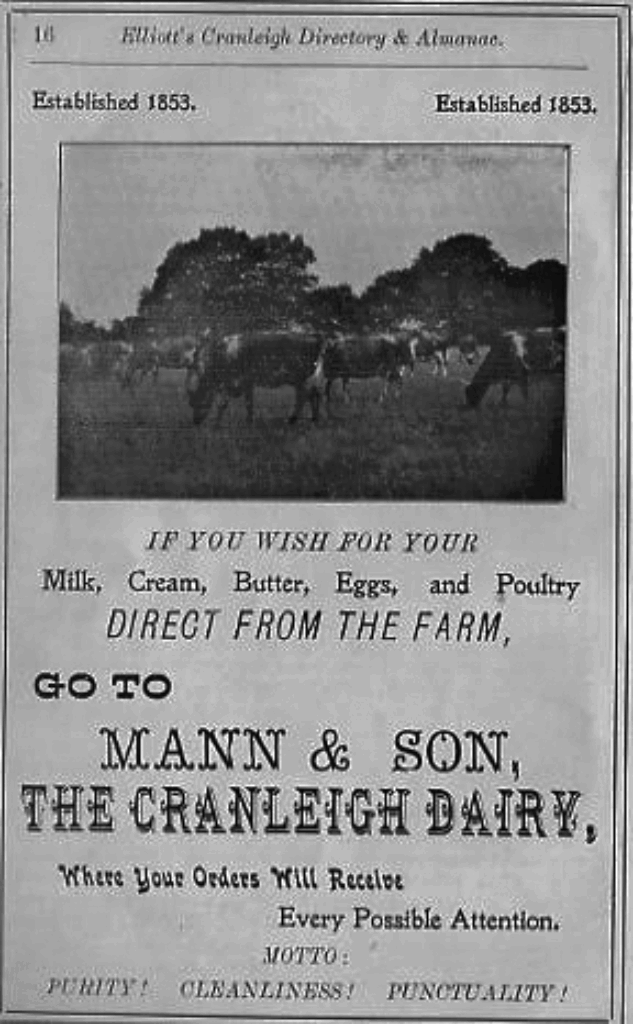
On the right-hand side of the path is the land formerly belonging to Vine Cottage, where Jesse and Sabina Mann ran a dairy farm. Their son, David, founder of the famous village store, was born here. The cottage still stands, but is barely visible, and now houses a security firm.
On the left, where the house called Birchwood and the industrial estate are, is the site of the workhouse, here 1793-1837. It was built of stone, three stories high, to accommodate 150 poor people (some sources say 250), though only a maximum of 25 was ever here. There was a ‘pest house’ (isolation block), ‘dying room’, staff houses, stables, barn, and more. After the Poor Law Amendment Act of 1834, Cranleigh was grouped with fifteen nearby parishes in the Hambledon Union, and all the paupers at Cranleigh workhouse were moved there. Inmates at Cranleigh seem to have been treated in a relatively humane fashion: after 1834 paupers faced a much more rigorous regime. People on the train would have seen the buildings, gradually becoming more and more derelict and being replaced with gasworks.
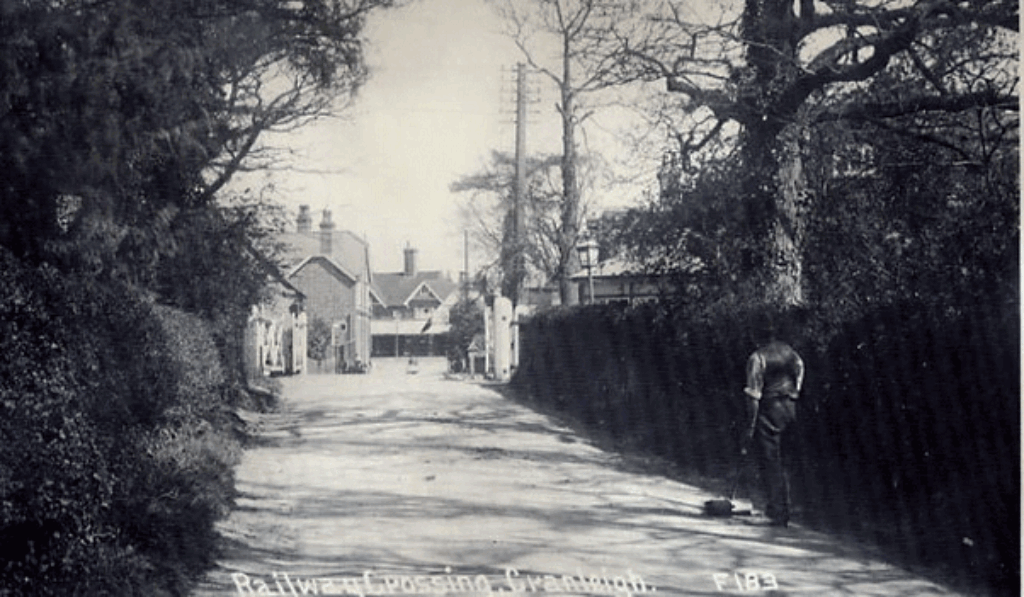
Looking south, train passengers would have seen the extensive lands of Knowle, where the Onslow family lived and began their political rise, before moving nearer to London and building Clandon Park. Most of the time the railway was in operation this was the home of two generations of the public-spirited Bonham family. Now, there are new houses, in roads named after Surrey Hills, and the splendid recently-opened park stretching from Knowle Lane to Alfold Road.
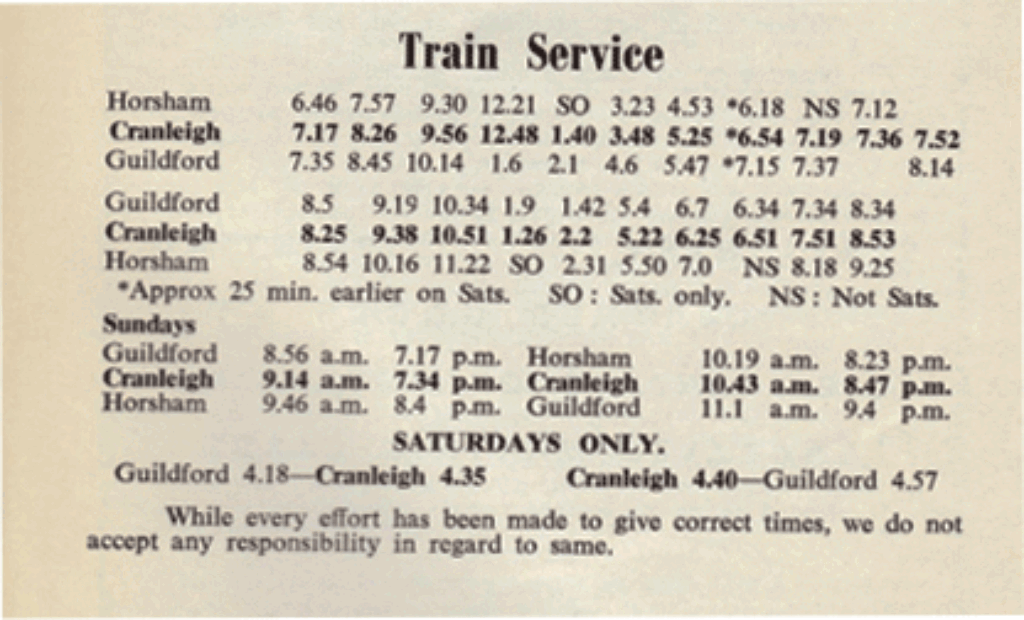
On the left of the railway line is the rear of St James’s Place. The house with a garden extension by the DLP belonged to the Greenfield family, who lost their three sons at the battle of the Somme in 1916. The car park and Stocklund Square are next. These were once the marshalling yards for trains, and the yards of three coal merchants. Sainsbury’s is built on the site of the railway station: it would be worthwhile to leave the path by the opening opposite the payment point closest to Sainsbury’s and to see the old station platform edge behind the store. Perhaps you can imagine the sight, sounds and smells of a train standing here. Make your way to Knowle Lane.
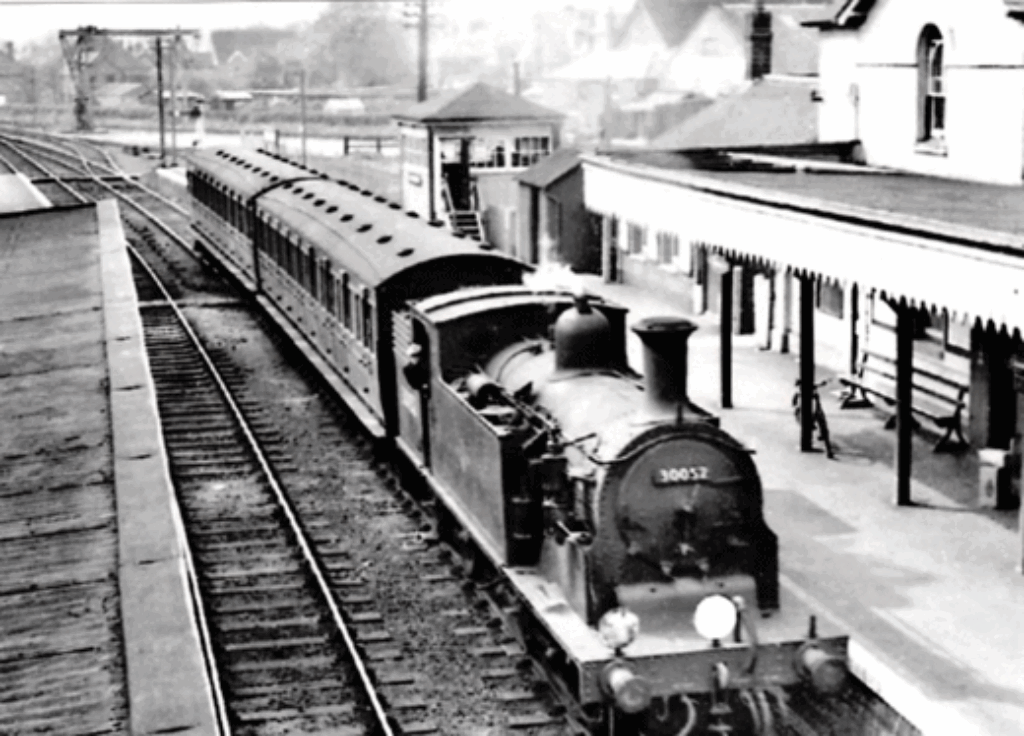
There used to be a level crossing of the road here, with gates operated manually by someone living in the Railway Crossing Cottage (now replaced). As there were only eight trains in each direction per day, it was perhaps not too onerous a job. Cross Knowle Lane and pick up the DLP behind the M&S carpark.
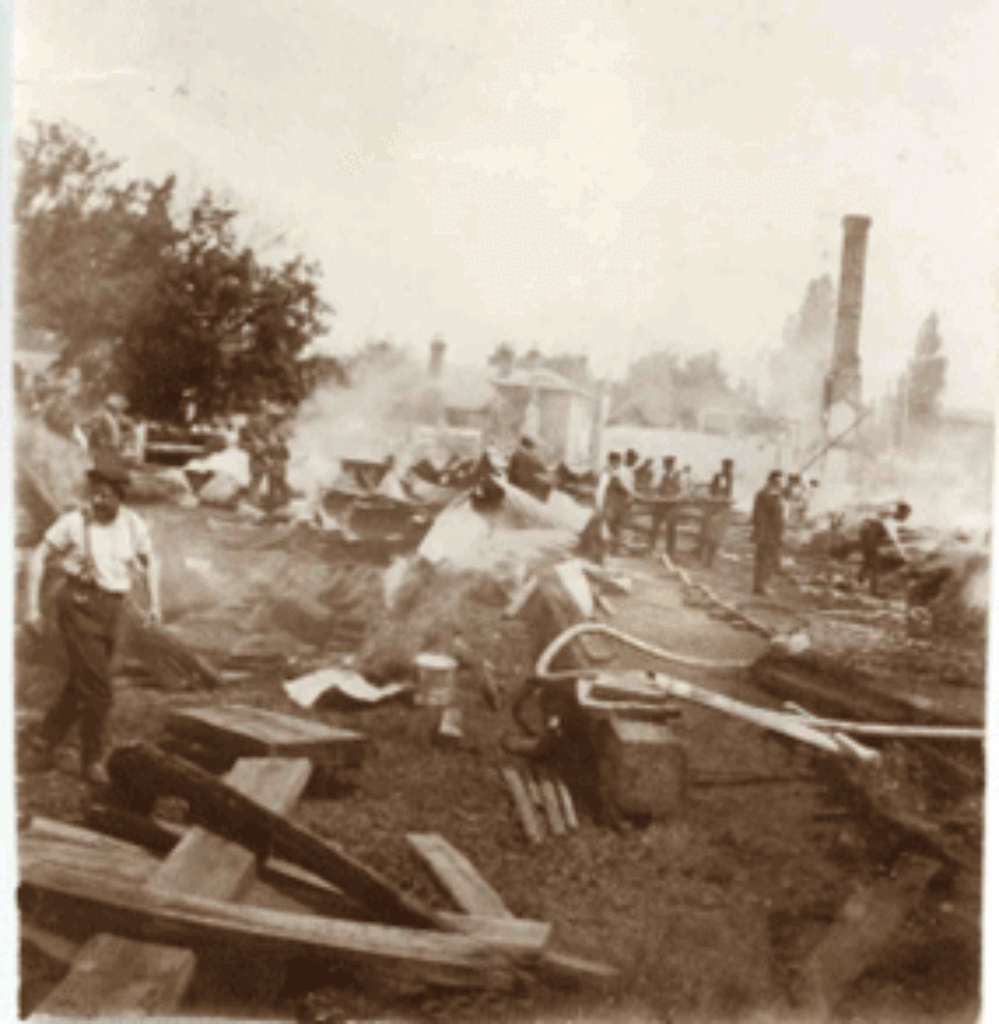
M&S Simply Food and its car park are on the site of the important builders’ yard, first of the Holden family, and then of Frederick Warren. Holden’s had 130 employees and the largest stock of oak and deal in Surrey when it suffered a great fire in 1906. Warren’s were the big Cranleigh builders of the 1920s-1940s: they put up many high-quality shops and houses.
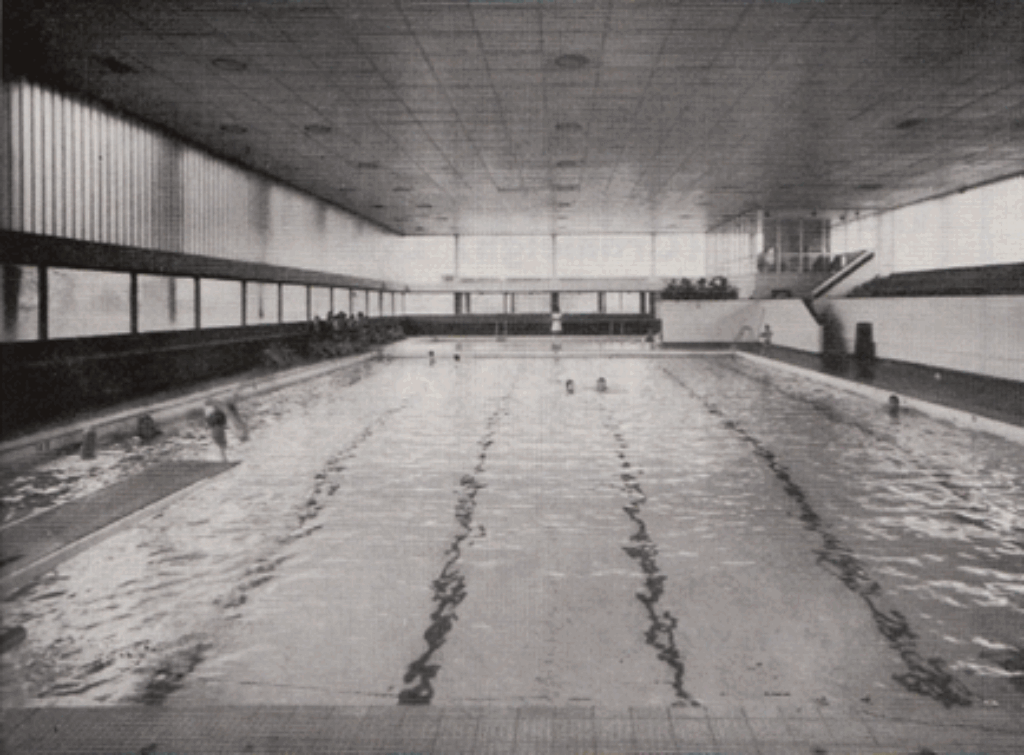
On the left, the path now goes behind the houses of John Wiskar Drive: he was the first head teacher of Glebelands School. On the right is an empty field given to Cranleigh for a new hospital and nurses’ home: sadly, it now seems unlikely to be built. We now emerge from the trees and pass behind the Band Room on the left, distinguishable by the musical notes in its brickwork. It was opened by the comedian Sir Harry Secombe in 1986, when there was a flourishing Cranleigh Youth Band. Next, there is the Swimming Pool and Leisure Centre, opened in 1970, and paid for by public gifts.
The route of the railway now goes straight across the Snoxhall playing fields, heading for Baynards and Horsham, and this walk ends. You may like to visit the Centenary Garden, a short distance to the left, where this spring a sculpture of a Ukrainian sunflower was placed among the poppy heads that commemorate every local man who died in the 1914-18 war. Or you may prefer to go along Village Way for refreshment in the High Street.
The Cranleigh History Society is not meeting in August.











